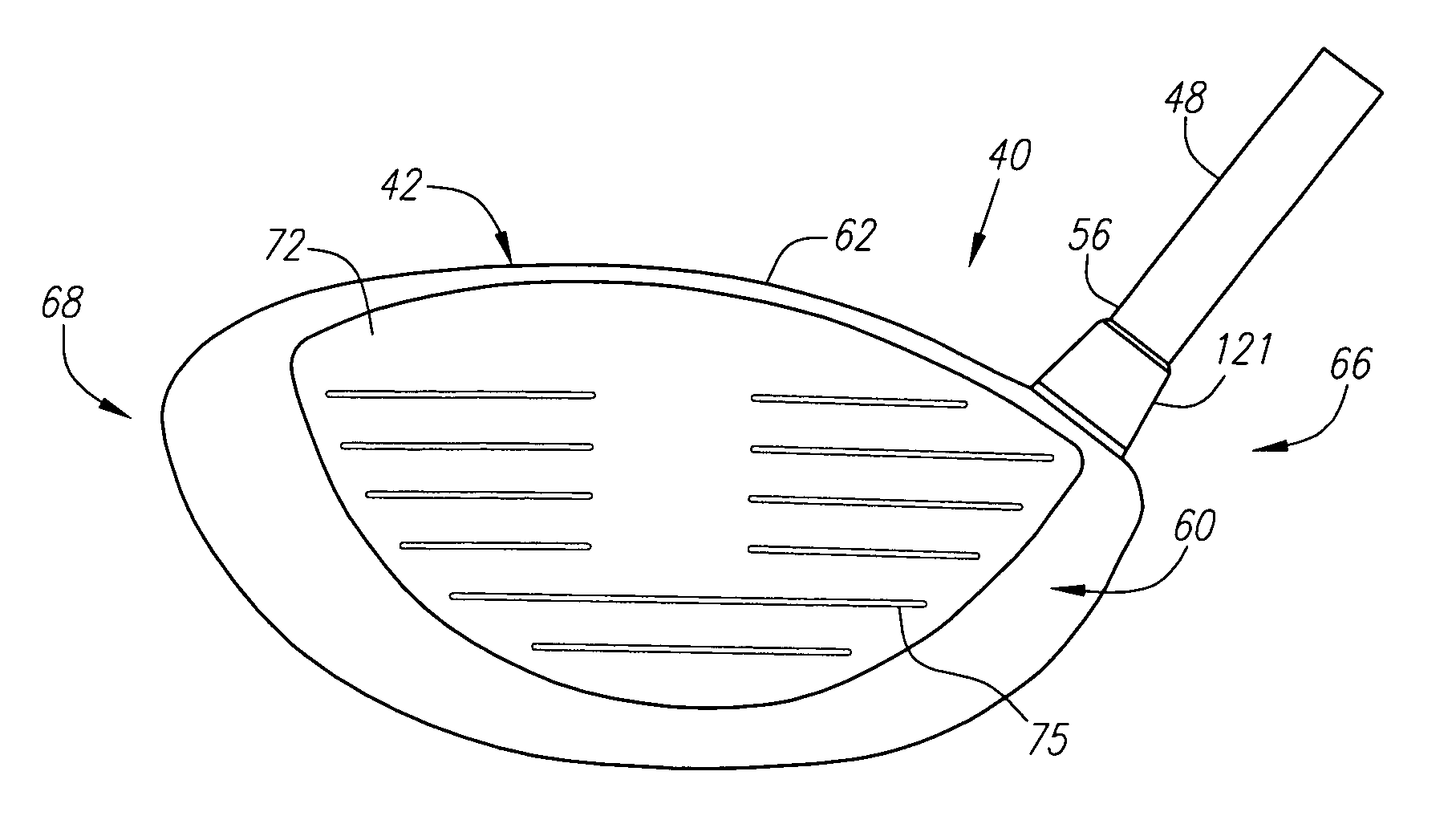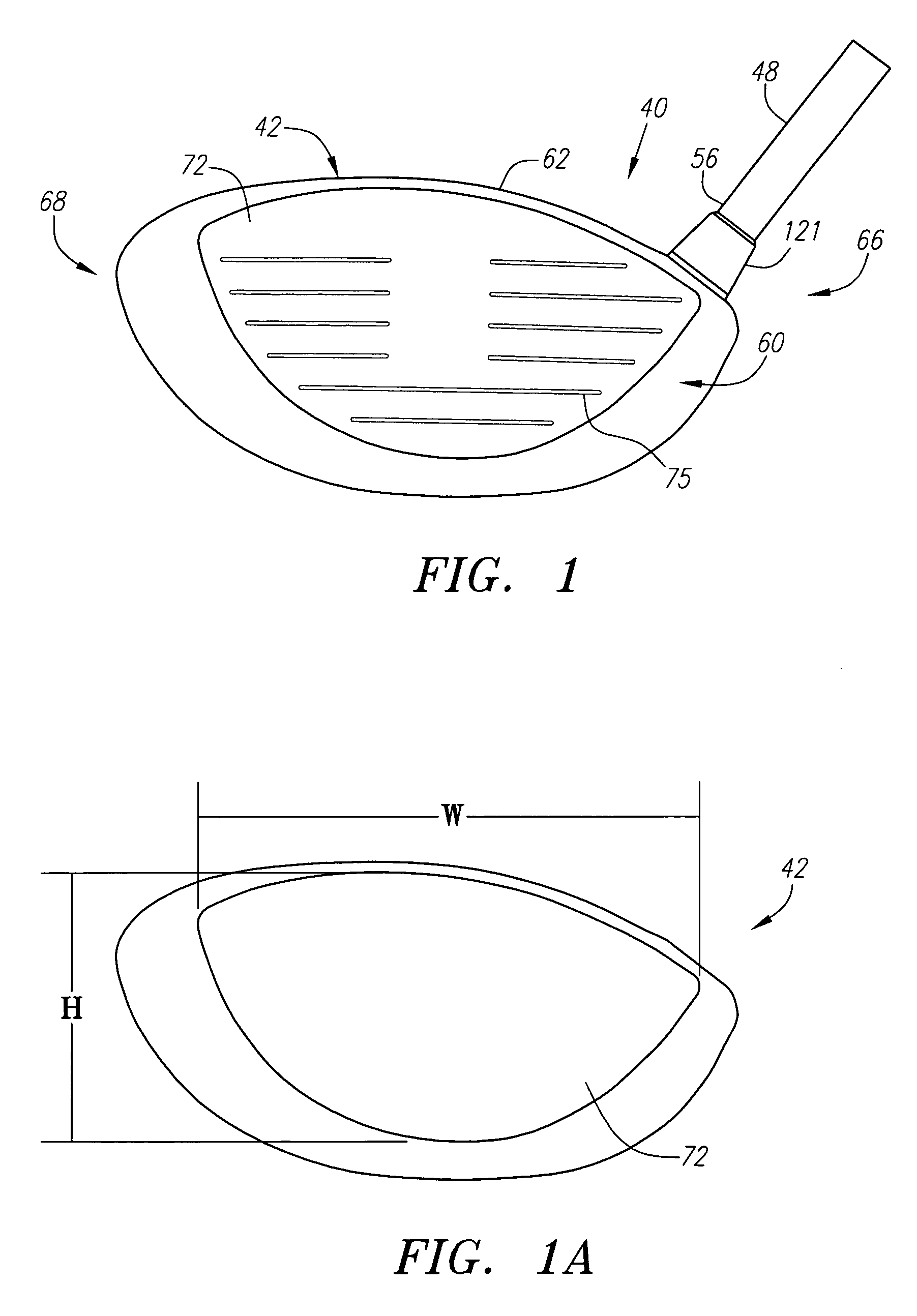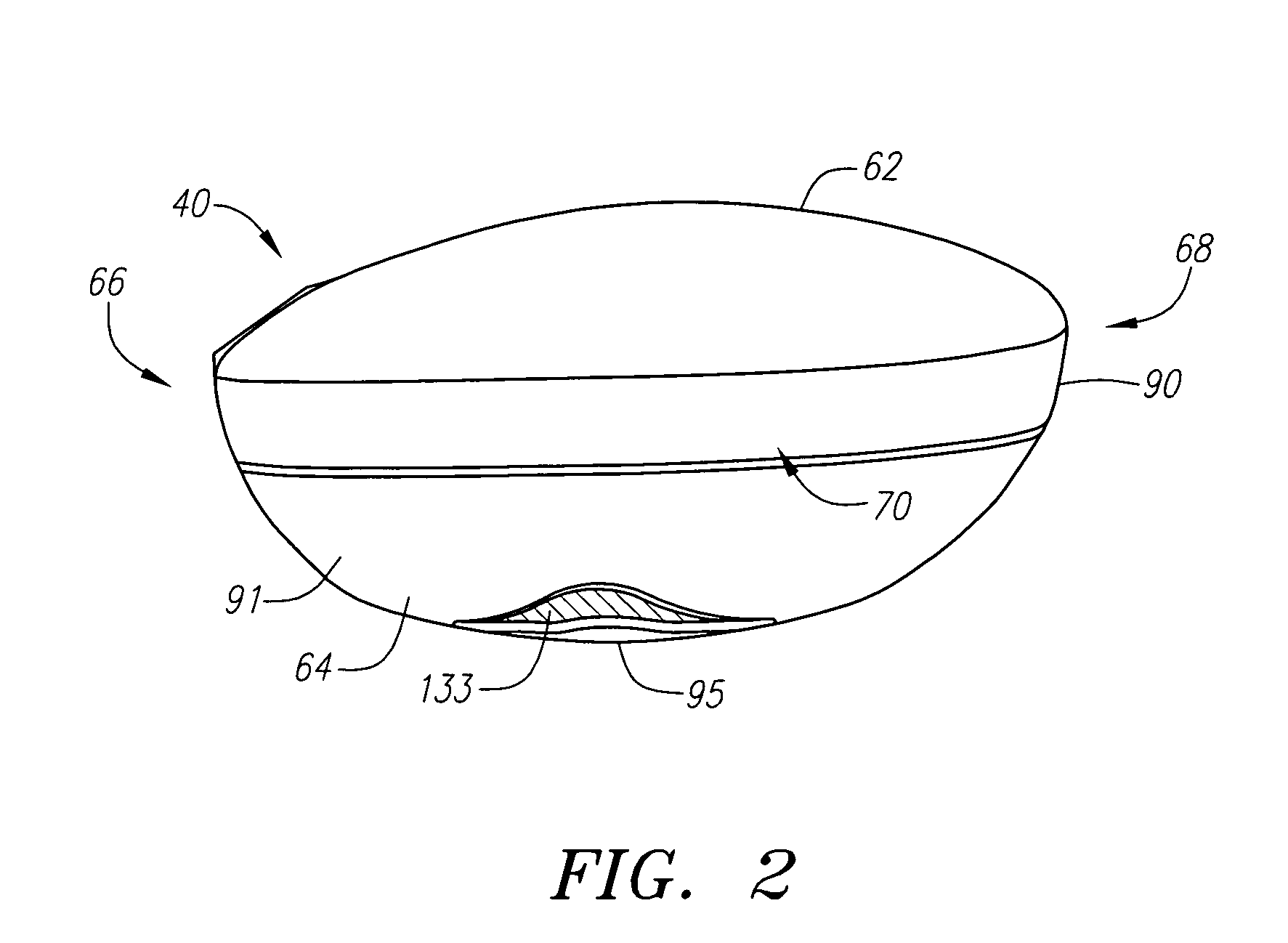Multiple material golf club head
a golf club head and multi-material technology, applied in the field of golf club heads, can solve the problems of increased energy transfer problems, energy loss, and greater deformation of golf balls
- Summary
- Abstract
- Description
- Claims
- Application Information
AI Technical Summary
Benefits of technology
Problems solved by technology
Method used
Image
Examples
Embodiment Construction
[0067]As shown in FIGS. 1–6A, a golf club is generally designated 40. The golf club 40 has a golf club head 42 with a hollow interior, not shown. Engaging the club head 42 is a shaft 48 that has a grip, not shown, at a butt end and is inserted into a hosel 54 at a tip end 56.
[0068]The club head 42 is generally composed of two components, a face component 60, and an aft-body 61. The aft-body 61 has a crown portion 62 and a sole portion 64. The club head 42 is preferably partitioned into a heel section 66 nearest the shaft 48, a toe section 68 opposite the heel section 66, and a rear section 70 opposite the face component 60. A sole weighting member 133 is disposed within a sole undercut portion 133a of the sole portion. The sole weighting member 133 has a mass ranging from 0.5 grams to 15 grams.
[0069]The face component 60 is generally composed of a metal material, and is preferably composed of a forged metal material. More preferably, the forged metal material is a forged aluminum al...
PUM
 Login to View More
Login to View More Abstract
Description
Claims
Application Information
 Login to View More
Login to View More - R&D
- Intellectual Property
- Life Sciences
- Materials
- Tech Scout
- Unparalleled Data Quality
- Higher Quality Content
- 60% Fewer Hallucinations
Browse by: Latest US Patents, China's latest patents, Technical Efficacy Thesaurus, Application Domain, Technology Topic, Popular Technical Reports.
© 2025 PatSnap. All rights reserved.Legal|Privacy policy|Modern Slavery Act Transparency Statement|Sitemap|About US| Contact US: help@patsnap.com



